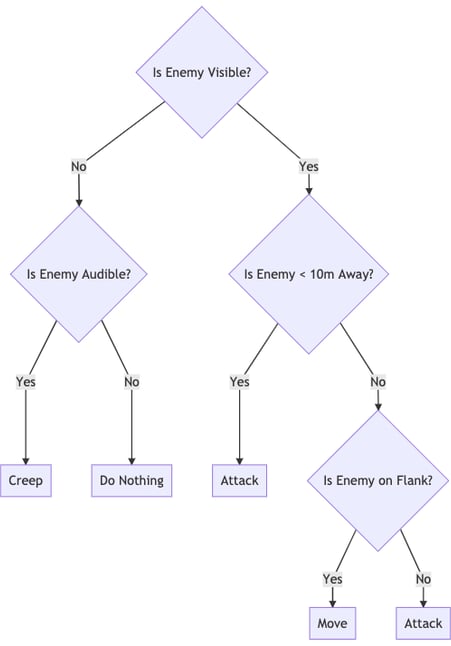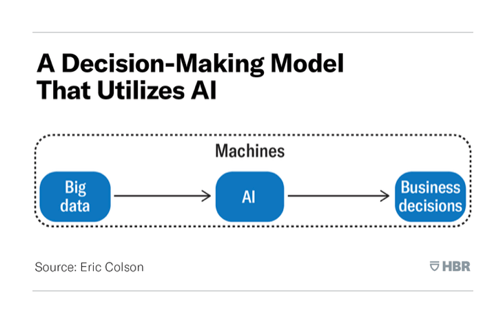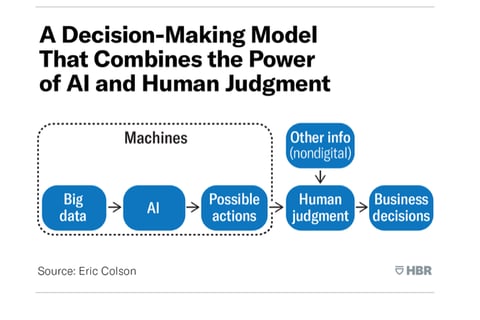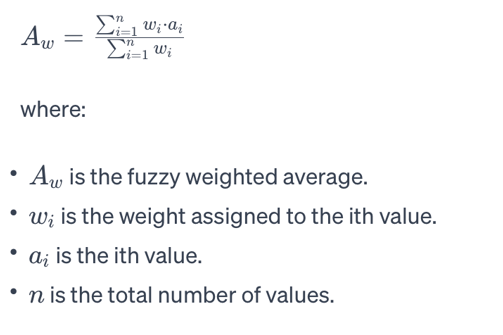Decoding the Future: Unleashing AI for Smart Decision Making
Dive into the evolution of decision-making processors, from human judgment to AI-driven precision. Learn how leveraging both AI and human processors transforms decision-making models and explore a powerful framework that combines hard-edged and fuzzy decision-making. Discover curated Python resources for implementation, offering product owners in dynamic industries a roadmap for building AI-driven strategies that surpass human capabilities.
In the heart of Telecom Towers Inc. (fictitious), atop the dizzying heights of the executive floor, Richard Mitchell, a seasoned telecom executive, found himself in a dilemma.
The phones were buzzing, and not just with customer complaints – the service area was haunted by a connectivity ghost.
The catch? Nobody could tell if the phantom disruption was caused by a looming storm or a mischievous gremlin in the machinery.
Richard, clad in a suit as sharp as his indecision, stood squinting behind the panoramic windows.
His team, a mix of tech wizards and weather aficionados, huddled around a high-tech map.
On one side, a tech guru with wild hair frantically typed away, deciphering cryptic code like a sorcerer.
Next to him, a weather expert was conjuring visions of thunderstorms and data showers.
As the tension in the room thickened, Richard's phone buzzed with the dilemma du jour.
Should he send a team into the treacherous service area, risking both stormy weather and a budget storm at headquarters?
The plot thickened as the team debated, throwing around phrases like "data precipitation" and "signal turbulence."
Richard, torn between a tech conundrum and the fear of getting soaked in the line of duty, decided to roll the dice... literally.
He reached for his coin of decision, flipped it into the air, and, with a dramatic catch, declared, "We shall face the storm!"....
The Human Processor
Humans and AI serve as processors, each with unique abilities. Just fifty to seventy-five years ago, human judgment was the central processor in business decision-making, relying on experience and gut instinct to discern good from bad, high from low, and risky from safe. However, cognitive biases, a result of millennia of evolution, introduced predictability in judgment, allowing for quick yet not always optimal or accurate decisions.
For routine decisions relying solely on structured data, delegating decisions to AI is advantageous. AI is less prone to human cognitive biases and can be trained to find segments in the population that best explain variance, even if unintuitive to human perceptions. AI excels in dealing with thousands or millions of groupings and is comfortable working with nonlinear relationships.
AI is more consistent and objective in its decisions, determining optimal ad creatives, inventory levels, or financial investments.
Enhancing Decision-Making
In the dynamic landscape of decision-making, understanding the nuances between "data-driven" and "AI-driven" approaches is crucial. While both terms involve processing information, they encapsulate distinct assets – data-centricity and processing ability. “Data-driven” and “AI-driven” aren't merely semantics; each term encapsulates distinct assets, with the former emphasizing data and the latter focusing on processing ability. This article delves into the evolution of decision-making processors, highlighting the shift from human judgment to AI-powered strategies.
In the 2023 Gartner CEO and Senior Business Executive Survey, a clear demand for intelligent applications emerged. Talent shortage, recognized by 26% of CEOs, was identified as the primary threat to their organizations, with a heightened focus on employee retention in their workforce agenda. Simultaneously, AI secured the top spot as the most anticipated disruptor in the market over the next 27 months [Source].
But the goal isn't to eliminate humans from the process entirely; rather, the value of AI lies in making better decisions than humans alone can achieve, leading to a step-change improvement in efficiency and enabling new capabilities.
Enter AI-Driven Decision-Making
According to a Forbes Advisor survey, a sizable 64% of firms believe that artificial intelligence would aid in boosting their overall efficiency. This reflects the growing confidence in AI's ability to revolutionize business operations [Source].
The Global GDP rate will grow by $15.7 trillion by 2030 boosted by AI adoption. Around 97 million people are expected to work in AI by 2025 [Source].
In today's era, the advent of AI introduces a paradigm shift. AI, as a processor, excels in routine decisions that rely on structured data. It mitigates the cognitive biases inherent in human decision-making, providing a more consistent and objective approach. AI can process vast amounts of data, identify nuanced patterns, and make decisions that are both efficient and effective.
The article explores leveraging both AI and human processors in the workflow, outlining four types of AI-driven decision-making models.


2. Fuzzy Decision Making
Incorporates fuzzy logic, specifically fuzzy weighted averages, to handle imprecision and uncertainty in decision-making. This mathematical computation combines values using weights, offering flexibility in scenarios where precise numerical values may be unavailable.
Here's a general overview of how fuzzy weighted averages work:
a. Fuzzy Sets:
- In fuzzy logic, variables are often represented using fuzzy sets. A fuzzy set allows for partial membership, meaning that an element can belong to a set to a certain degree.
b. Membership Functions:
- Membership functions define the degree of membership of an element in a fuzzy set. These functions assign a value between 0 and 1, indicating the degree of certainty or membership.
c. Weighted Average Calculation:
- For a fuzzy weighted average, each value in the set is assigned a weight, indicating its importance or contribution to the overall average. The weights are often expressed as degrees of certainty.
d. Aggregation:
- The weighted values are aggregated to calculate the fuzzy weighted average. This involves multiplying each value by its corresponding weight and then summing up these products.
Mathematically, the fuzzy weighted average (A_w) can be expressed as:
The Synergy of AI and Human Processors:
The goal is not to replace humans but to leverage the unique strengths of both AI and human processors. This symbiotic relationship gives rise to four decision-making models: Humans in the loop, Human in the Loop for Exceptions, Humans out of the loop, and Humans on the loop.


A Framework for Decision Making Using AI
A simple framework for decision-making using AI includes hard-edged decision-making and fuzzy decision-making. The latter involves a fuzzy weighted average, a mathematical computation combining values using weights to account for imprecision or uncertainty.
1. Hard-Edged Decision Making
- Use data science to create decision-trees or decision-state-machine structures. The decisions are based on assessments that can be yes or no. It is assumed that it is possible to determine without ambiguity whether each answer is a yes or no.


Source for picture: https://github.com/oguzeroglu/Ego
Unfortunately, in many business situations, the answer is not an unquivocal "yes" or "no". More often than not, there is a fog of uncertainty. For example, if you look at the above picture, consider a situation where you are not even sure if "the enemy is visible". Maybe what you are seeing is a decoy and not the real enemy.
To navigate the complexities of a "fog of war" scenario, where the business executive does not have all the data he needs, but needs to make decisions based on probabilistic assessments, there is another method - Fuzzy decision making.
Combining Hard-Edged and Fuzzy Decision Making
A simple framework for decision making is to combine the above two: hard-edged decision making with fuzzy decision making.
As product owners in dynamic industries like healthcare, telecom, power and advertising consider implementing AI-driven decision-making systems, understanding the synergy between hard-edged and fuzzy decision-making becomes paramount.
The marriage of data science, hard-edged decision-making, and fuzzy logic creates a powerful framework for making decisions that surpass human capabilities.
Next Steps
If you are trying to build an automated software system that would run on your servers and implement decision-making, you would have to do two things:
1. Using data science, evaluate the decision-tree or the decision-state-machine.
2. Build software, could be implemented in python or some other computing language, that executes hard-edged decision making + fuzzy decision making.
Here is a list of python resources that solve some small parts of the problem, but unfortunately, leave gaping gaps. The list is long and solve only parts of the problem, but they can be a good starting point.
If you would like some help building an AI driven system that solves the entire problem for your business, talk to us.
Click to schedule an AI strategy call now


Contact us
Whether you have a request, a query, or want to work with us, use the form below to get in touch with our team.
